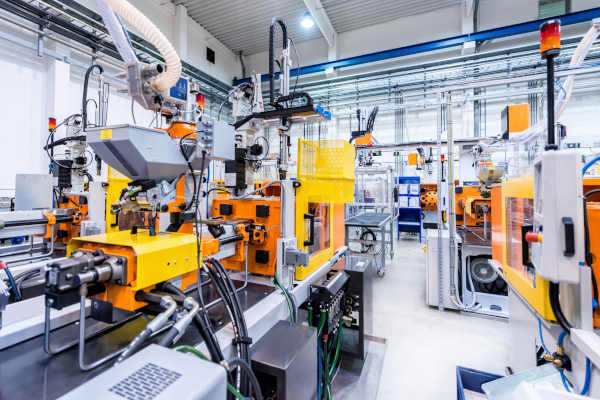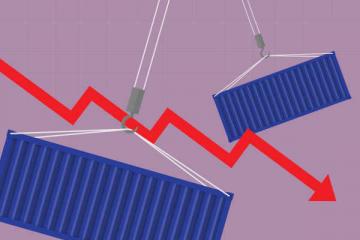As freight rates and delays rise due to the conflict in the Red Sea and a drought in the Panama Canal, many industries continue to shift their supply chain strategy in response to evolving risks. This is not new to manufacturing, however, as the sector has long faced challenges such as an ongoing labor shortage and disruptive material shortages brought on by the pandemic.
“These supply chain disruptions are always going to happen,” said R.J. Romano, supply chain managing director at BDO. “The challenge is, now having a more complex supply chain, it’s just harder to manage day to day.”
Overcoming these ongoing disruptions will require investments in technology and new strategies, including a growing initiative to increase nearshoring or onshoring efforts. Data from BDO’s 2024 Manufacturing CFO Outlook Survey shows that 27% of manufacturers plan to shift countries in 2024 due to rising transportation costs. Another 44% plan to shift sourcing to new countries this year due to the increasing frequency and severity of natural disasters, along with rising total tax liability (38%), and rising prices for raw materials and commodities (35%).
“We saw in 2023 a lot of companies start pulling the trigger and moving production around to different parts of the world,” said Romano. “That’s going to continue, regardless of these disruptions, because the expectations around supply chains now to be more flexible and not as stringent, not as just in time…it requires them to diversify.”
Manufacturers are also increasingly focused on gaining greater visibility into their supply chains as they expand their supplier base and move production to different parts of the world, with 21% of manufacturers citing accurate demand and inventory management as their top supply chain challenge. They said they plan to mitigate the issue by investing in visibility.
“It [diversifying] opens up this added complexity that if you don’t have good control or visibility of your supply chain today… you don’t have that visibility to monitor it all, that’s where companies run into trouble,” said Romano.
Red Sea impacts yet to be felt by U.S. manufacturers
Disruptions in the Red Sea and at the Panama Canal further exacerbate the need for better supply chain strategy and visibility as manufacturers with global supply chain reach brace for potential bottlenecks if conflicts continue into the next quarter.
Romano said that while companies with a greater presence in Europe or the Middle East may be feeling immediate impacts, for the majority of U.S. manufacturers, he expects to see a ripple effect later on, especially if conflicts continue into Q2 as expected.
“With all these changes transportation-wise, capacity is really going to get tight,” he said. “Transportation costs generally are going to rise…it’s kind of like a domino effect that eventually will ripple into U.S. manufacturers.”
Romano adds not to expect pandemic-level disruption though, which he called a perfect storm.
“We had all these different geopolitical issues going on, and oh by the way, plants were shut down for periods of time,” he said. “In this case, production isn’t quite impacted, per se. There’s not a mass exodus of labor, but it’s more just supply chain challenges where costs are going to rise and inventory’s going to be out of whack. It’s more of the day-to-day challenges.”
Managing these challenges will be a top priority for manufacturers, but supply chain disruptions shouldn’t stand in the way of a successful year ahead.
“The outlook on the manufacturing side is still positive,” added Romano. “But they do know that they need to invest in their supply chain and make sure it’s as bulletproof as possible for them to combat the next disruption.”
SC
MR


More Inventory Management
- Israel, Ukraine aid package to increase pressure on aerospace and defense supply chains
- How S&OP provides the answer to in-demand products
- Shining light on procurement’s dark purchases problem
- ISM reports that services sector sees continued growth in March
- Predicting stockouts: Enhancing FMCG resilience through data-driven insights
- ISM reports manufacturing sees growth in March, snaps 16-month stretch of contraction
- More Inventory Management
Latest Podcast

 Explore
Explore
Topics
Procurement & Sourcing News
- Bridging the ESG gap in supply chain management: From ambition to action
- Israel, Ukraine aid package to increase pressure on aerospace and defense supply chains
- How CPG brands can deliver on supplier diversity promises
- How S&OP provides the answer to in-demand products
- There is still work to do to achieve supply chain stability
- Blooming success: The vital role of S&OE in nurturing global supply chains
- More Procurement & Sourcing
Latest Procurement & Sourcing Resources

Subscribe

Supply Chain Management Review delivers the best industry content.

Editors’ Picks




